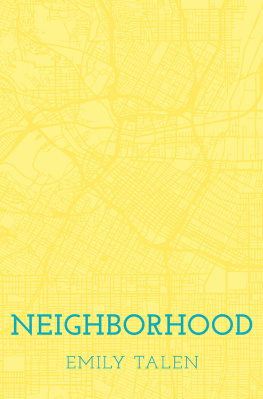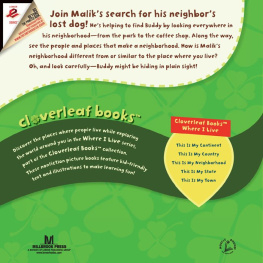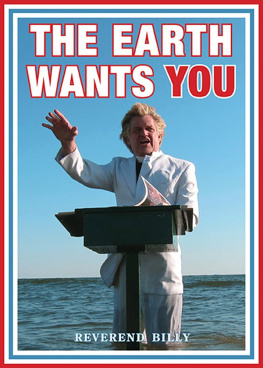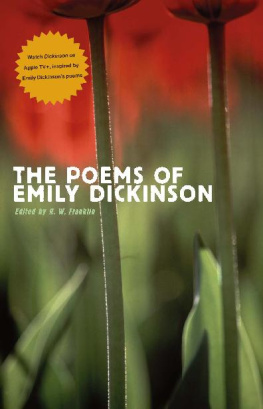Emily Talen - Neighborhood
Here you can read online Emily Talen - Neighborhood full text of the book (entire story) in english for free. Download pdf and epub, get meaning, cover and reviews about this ebook. year: 2019, publisher: Oxford University Press, genre: Politics. Description of the work, (preface) as well as reviews are available. Best literature library LitArk.com created for fans of good reading and offers a wide selection of genres:
Romance novel
Science fiction
Adventure
Detective
Science
History
Home and family
Prose
Art
Politics
Computer
Non-fiction
Religion
Business
Children
Humor
Choose a favorite category and find really read worthwhile books. Enjoy immersion in the world of imagination, feel the emotions of the characters or learn something new for yourself, make an fascinating discovery.
- Book:Neighborhood
- Author:
- Publisher:Oxford University Press
- Genre:
- Year:2019
- Rating:4 / 5
- Favourites:Add to favourites
- Your mark:
- 80
- 1
- 2
- 3
- 4
- 5
Neighborhood: summary, description and annotation
We offer to read an annotation, description, summary or preface (depends on what the author of the book "Neighborhood" wrote himself). If you haven't found the necessary information about the book — write in the comments, we will try to find it.
Neighborhood — read online for free the complete book (whole text) full work
Below is the text of the book, divided by pages. System saving the place of the last page read, allows you to conveniently read the book "Neighborhood" online for free, without having to search again every time where you left off. Put a bookmark, and you can go to the page where you finished reading at any time.
Font size:
Interval:
Bookmark:


Oxford University Press is a department of the University of Oxford. It furthers the Universitys objective of excellence in research, scholarship, and education by publishing worldwide. Oxford is a registered trade mark of Oxford University Press in the UK and certain other countries.
Published in the United States of America by Oxford University Press
198 Madison Avenue, New York, NY 10016, United States of America.
Oxford University Press 2019
All rights reserved. No part of this publication may be reproduced, stored in a retrieval system, or transmitted, in any form or by any means, without the prior permission in writing of Oxford University Press, or as expressly permitted by law, by license, or under terms agreed with the appropriate reproduction rights organization. Inquiries concerning reproduction outside the scope of the above should be sent to the Rights Department, Oxford University Press, at the address above.
You must not circulate this work in any other form and you must impose this same condition on any acquirer.
CIP data is on file at the Library of Congress
ISBN 9780190907495
eISBN 9780190907518
This book was made possible in part by a John Simon Guggenheim Memorial Foundation Fellowship.
Also by Emily Talen:
New Urbanism and American Planning
City Rules
Urban Design for Planners
Design for Social Diversity (with Sungduck Lee)
Now that we are becoming citizens of the world... we must take care that we do not lose our neighborhood feeling.
L. H. Bailey, 1915
People need an identifiable spatial unit to belong to.
Christopher
This book is written in support of those who believe that neighborhoods should be genuinely relevant in our livesnot as casual descriptors of geographic location but as places that provide an essential context for daily life. Such neighborhoods would be identifiable, serviced, diverse, and connected. Their primary purpose would not be social separation.
By this definition, much of American urbanism is not neighborhood-based. This situation evolved over the course of the past century; before then, neighborhoods were the foundation of urban experience. Centered and sometimes bounded, mixed in land use and people, the neighborhood constituted the basic infrastructure of daily living. Neighborhoods were not always a setting for harmony and should not be sentimentalized. But as physically identifiable places, they functioned as a platform for daily exchange that was distinct from the city of monuments and spectacle. Neighborhoods were the spatial unit that people related to.
This neighborhood-based existence changed fundamentally when cities swelled under industrial capitalism and technological innovations lessened the need for a local urban existence. Urban life became less about localized relationships and more about movement and freedom, and neighborhoods were redefined accordingly. Freed from the requirement of proximity, social connection that required physical contact, and a daily life based on walking, the notion of a neighborhood became open to wider interpretation.
Two responses emerged. One was to try to get the traditional neighborhood back. Early 20th-century sociologists, worried about how the physical and social complexity of the modern metropolis was obscuring the neighborhood and breaking apart the sense of belonging it had long provided, doubled down on what seemed like the most obvious way to reinstate the neighborhood: a definition based on social homogeneity. When urban planners translated these theories to physical form, their neighborhood plans often manifested as explicit enablers of social and land use segregation. This ran counter to the historical experience of the neighborhood, which was mostly mixed in population and use.But starting in the 1920s, developers, and some government entities, capitalized on the idea of the socially sorted neighborhood as something to be leveraged to sell lots and stoke consumption. It offered a particular understanding of neighborhood that presumably washed away conflict and instead offered a controlled and narrow understanding of urban life. The rapid proliferation of suburban neighborhoods had this kind of identity, an identity rooted in social sameness.
A second, very different kind of response was that, for some urban dwellers, the idea of neighborhood simply lost relevance. It became little more than a convenient geographic locator. For these urbanites, Melvin Webbers community without propinquity was not only possible but was preferable, which rendered the neighborhood anemic., like valentines. It was an ambiguity that sometimes led to an explicit rejection of the neighborhood as too parochial, in which case the physically prescribed neighborhood seemed disingenuous at best. Ultimately it was a perspective that supported and was supported by academic exploration that heralded the myriad ways neighborhoods could be conceptualized, from cognition to biological analogies about cell structure to rhetorical device. These open-ended definitions reflected a profound reduction in the neighborhoods actual importance.
Neither of these responses was particularly satisfying for anyone hoping that neighborhoods could be sustainedor successfully reinstatedas meaningful dimensions of urban life. Eventually options for living in a neighborhood seemed to be reduced to suburban neighborhoods lacking diversity or undifferentiated urbanism whose neighborhood relevance amounted to being a name on a map. To some segments of the populace, these outcomes did not constitute a problem. But to those living in the ill-defined, formless world of urban ambiguity that had come to characterize much of the American city, the absence of a sense of neighborhood seemed a missed opportunity. Such places lacked what a lucky few well-defined and diverse urban neighborhoods had: a sense of place, local rootedness, social connection, and a sense that the everyday world around them mattered because it was a setting for daily life and that residents had some sense of agencythat is, the ability to effectuate change or play a role in neighborhood life. For those without a neighborhood, what was needed was a reformulation of the neighborhood ideal in a way that was realistic, relevant, and not reliant on exclusionan experience of neighborhood that went beyond casual description or a marketing selling point.
Might it be possible to constitute neighborhoods that are more than a label, that reject segregation, and that are not hopelessly anachronous? Is it possible to reinstate some version of the historical neighborhood as something real and meaningful in 21st-century urban experience?
While many factors leading to the decline of the traditional neighborhoode-commerce and the loss of small retailers, suburban exclusivity and gated communities, internet-based social contactseem to be beyond anyones control, other factors seem more a product of neglect and confusion about neighborhood definition. I argue that the reinstatement of neighborhoods might be supported if academics and planners finally move past the critiques and countercritiques that have the left the idea of neighborhood muddled and problematized. Historically neighborhoods seemed to just be, defined by technological limits and social and economic needs. In modern cities, neighborhoods require more effort. Resolution of entrenched debatesabout their design, their ability to be planned, their governance, their social impact, and their social makeupwill help the neighborhood become something more than a valentine or a census tract. And although these debates permeate academic discourse, they are also part of the lived experience of neighborhood residents.
Font size:
Interval:
Bookmark:
Similar books «Neighborhood»
Look at similar books to Neighborhood. We have selected literature similar in name and meaning in the hope of providing readers with more options to find new, interesting, not yet read works.
Discussion, reviews of the book Neighborhood and just readers' own opinions. Leave your comments, write what you think about the work, its meaning or the main characters. Specify what exactly you liked and what you didn't like, and why you think so.









